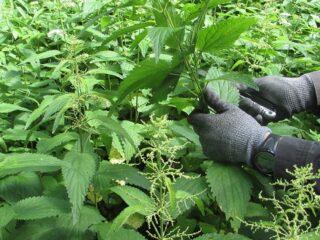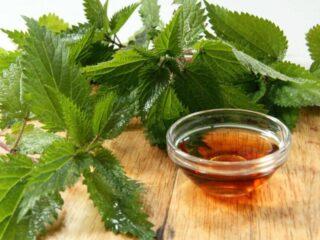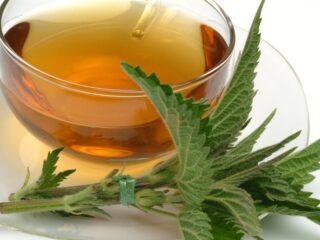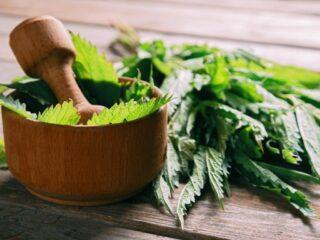Content
In official and folk medicine, treating joints with nettle in combination with traditional methods and physiotherapy is considered effective. It is necessary to prepare medicinal forms from the plant and use them in practice strictly according to the prescription and after consultation with a doctor.
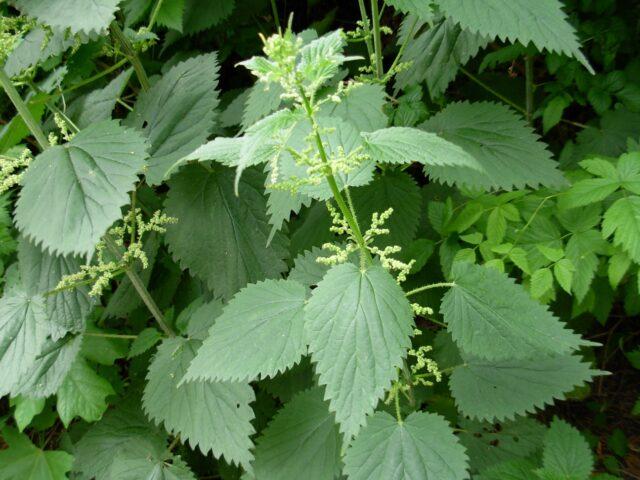
Raw materials are collected from May to mid-July
What are the benefits of nettle for joints?
There are about fifty thousand species of stinging plant in the world. They differ in appearance, but the chemical composition and beneficial properties are identical.
In Russia, stinging nettle, the most common species, is most often used for medicinal purposes. Its healing properties are explained by its chemical composition, which includes:
- ascorbic acid;
- carotene;
- chlorophyll;
- flavonoids;
- carotenoids;
- vitamin K;
- organic acids;
- macroelements (potassium, iron, magnesium, zinc, etc.).
The composition allows you to have a healing effect on the joints:
- Stop inflammatory processes.
- Relieve pain.
- Reduce swelling.
- Increase immunity.
- Stimulate blood circulation.
- Suppress infection.
- Strengthen tissue regeneration.
- Improve the elasticity of blood vessel walls.
How to use nettle to treat joints
The medicinal properties of the plant make it possible to alleviate the patient’s condition with joint pathologies. Dosage forms based on it are used depending on the indications and symptoms. For this purpose, infusions, decoctions, tinctures, ointments and teas are prepared.
Leaf decoction
It is believed that May nettle has the greatest effect on treating joints. To prepare a decoction according to the classic recipe, the following ingredients are needed:
- fresh nettle leaves – 50 g;
- water – 2 l.
Preparation procedure:
- The leaves are crushed.
- Place in an enamel bowl.
- Fill with water.
- Bring to a boil and simmer over low heat for 10 minutes.
- Cool and filter.
Take 100 ml three times a day before meals.
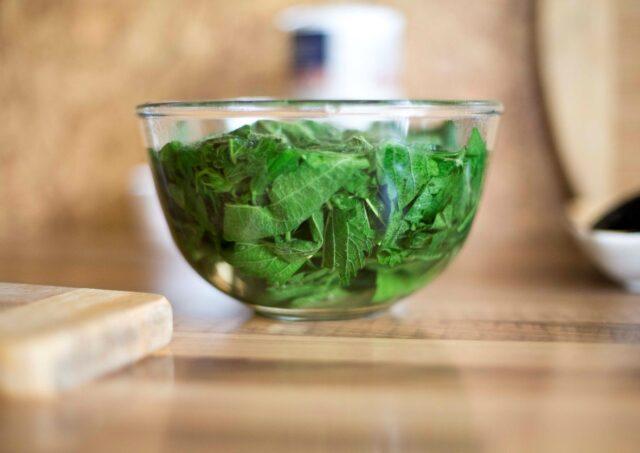
It is convenient to prepare the decoction in a water bath
Leaf infusion
Drinking the infusion helps reduce rheumatic joint pain.
Includes:
- nettle foliage – 30 g;
- wild rosemary – 50 g;
- boiling water – 1 l.
Preparation procedure:
- Plant materials are crushed and mixed.
- Pour boiling water over.
- Leave for 15 minutes.
- Strain.
Take 50 ml five times a day.
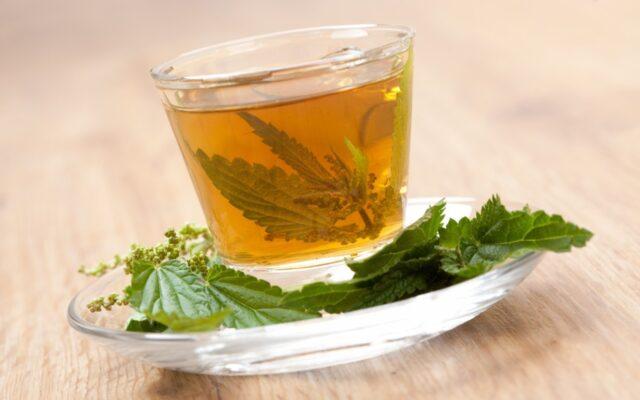
The infusion may include other medicinal herbs - sweet clover, string, asparagus
Tincture
To relieve joint pain, a tincture is often used, which includes:
- nettle roots and leaves – 100 g;
- medical alcohol – 500 ml.
Preparation procedure:
- The raw materials are thoroughly crushed and placed in dark glass containers.
- Fill with alcohol.
- Seal tightly.
- Store for thirty days in a dark place, shaking occasionally.
- Strain.
The tincture can be used internally or externally. In the first case, 15 ml of the product is diluted in 100 ml of water and taken twice a day for a course of two weeks.
Rub the tincture externally on sore joints five times a day. The duration of treatment is one month.
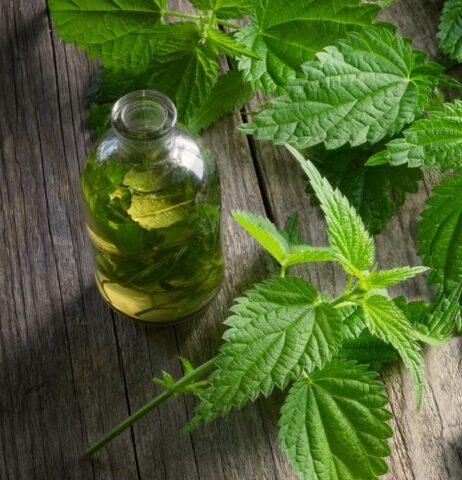
Instead of alcohol, it is acceptable to use vodka
Herbal tea
For joint diseases, it is useful to take herbal tea. It includes:
- dry nettle leaves - 3 tbsp. l.;
- boiling water – 1 l.
The method of preparing it is very simple:
- Nettle is poured with boiling water.
- Insist for a quarter of an hour.
During the day, take no more than four cups of the medicinal drink.
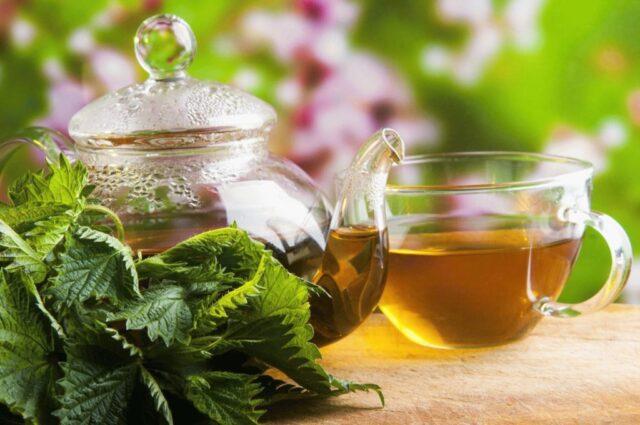
Dried rose hips are often added to herbal tea.
Nettle oil
An effective remedy for joint pain is oil made from nettle leaves, seeds or roots. It requires ingredients:
- nettle raw materials;
- refined vegetable oil.
Preparation procedure:
- Pass the leaves and stems of the plant through a meat grinder.
- Place the mixture without compacting it in a glass jar, filling it to two-thirds of its volume.
- Fill with oil to the top.
- Cover with a lid and place in a cool, dark place for two weeks.
- Stir occasionally.
- Filter.
The product is used as a rub once a day.
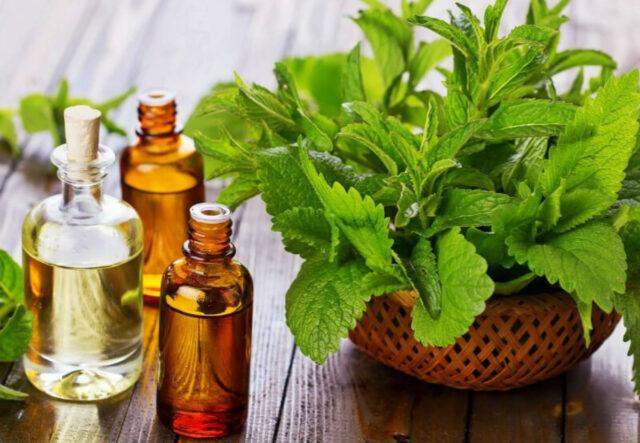
The oil is ready when the nettle particles become transparent and the liquid becomes dark
Ointment and compresses
The ointment can also be prepared at home. You will need the following ingredients:
- fresh nettle leaves – 50 g;
- butter – 100 g.
Preparation procedure:
- Soften the butter at room temperature.
- Grind the leaves with a blender.
- Mix them with oil.
- Leave for three hours.
- Mix again.
Use the ointment before going to bed. Rub into the joint with massage movements, after which a warm bandage is applied. The course is two weeks.
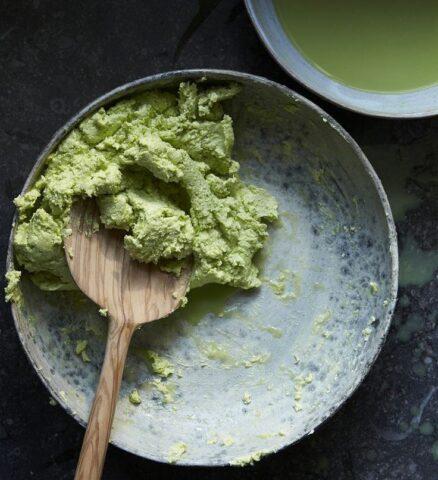
The ointment should be stored in the refrigerator
For aching pain in the joints, you can use a compress, for which you will need:
- fresh nettle and burdock leaves;
- bandage.
Application order:
- Nettles are twisted in a meat grinder.
- Apply the paste to the sore spot.
- Cover with a burdock leaf.
- Fixed with a bandage.
The compress is applied to the affected joint once a day for 30 minutes. The course is ten days.
Therapeutic baths
For nettle baths, a decoction is first prepared, for which they use:
- nettle roots – 100 g;
- fresh leaves – 250 g;
- water – 1 l.
Preparation procedure:
- The mixture is poured with water.
- Boil for 30 minutes.
- Leave for 1 hour.
- Strain.
The broth is poured into a bath of warm water and taken for 20 minutes.

To enhance the effect, add horseradish, pine needles and birch leaves
Nettle brooms in the bathhouse
It is very useful for sore joints to steam in a bathhouse with nettle brooms, which are collected before flowering. The stem should be strong and the foliage lush. The broom is steamed not in boiling water, but in warm water.

Before the procedure, you need to steam well and warm up the body.
Fresh nettle for pain relief
Fresh nettle is used as an ambulance for sore joints. It is picked, dried a little in the sun so that it loses its strong burning sensation, and applied to the sore spot.
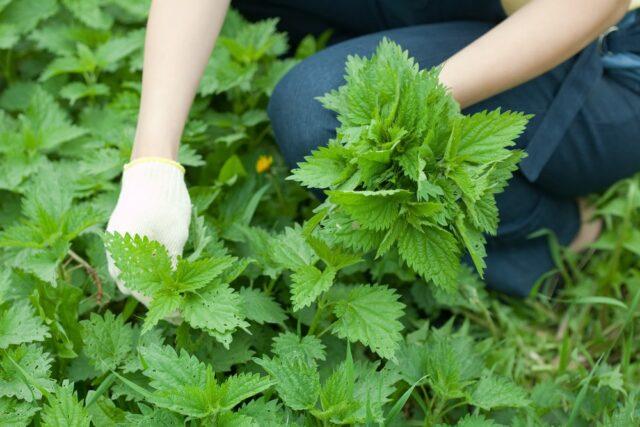
In folk medicine, to get rid of spasms, joints are lashed with nettles covered with morning dew.
The use of nettle for joint diseases
Treating leg joints with nettle at home can relieve pain from arthritis, arthrosis, bursitis, rheumatism and gout. Proper use of herbal dosage forms in combination with traditional treatment helps stop the progression of the disease and prevent complications.
For osteochondrosis
Nettle oil is used to relieve spasms, increase blood flow to muscles and reduce pain in osteochondrosis. Applying the product to the skin and rubbing it in helps restore cartilage tissue. To do this, the procedure is carried out four to five times a day for two weeks.
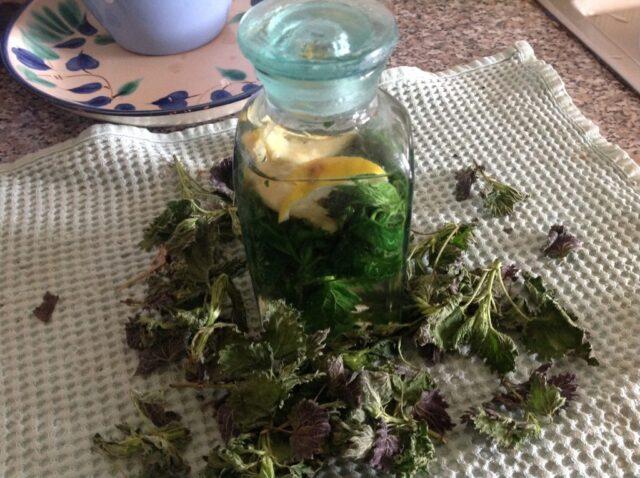
People at risk of heart attack should not use nettle.
For rheumatism
Joint pain caused by rheumatism is treated with decoctions and infusions. They are taken during an exacerbation of the disease, 200 ml every 2 hours until the symptoms subside.
For arthritis and polyarthritis
When joints are affected by arthritis or polyarthritis, official medicine offers methods to strengthen the immune system and act locally on the source of pain. In severe cases of the disease, surgical intervention is possible.
For complex therapeutic treatment, baths and ingestion of decoctions and infusions are used, which, in addition to nettle, may include mint, linden flowers and dill seeds.
For gout
The cause of the disease is a metabolic disorder. As a result, uric acid and urate accumulate in the joints in the form of crystals. Nettle helps mitigate the course of the disease in its chronic stage. To do this, use all parts of the plant from which a decoction, infusion or alcohol extract is prepared.They help relieve swelling and reduce inflammation. A compress and eating the plant fresh in salads and first courses has a positive effect.
With a heel spur
In folk medicine, the method of treating heel spurs using a compress is very popular. Fresh crushed nettle is placed on the heel in a 1 cm layer, and on top is a burdock leaf (velvety side inward). Cover with cling film and secure with a bandage overnight. May nettle has the greatest effect if you use the method for a month.
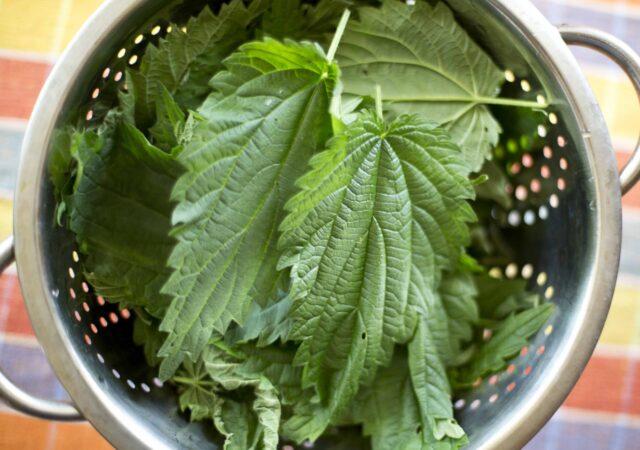
There are two-week breaks between courses of treatment.
For arthrosis
Osteoarthritis of the knee joint occurs in a huge part of the population, including very young people. A decoction that has proven effective in treatment is taken 200 ml twice a day.
Nettle tincture with vodka is taken orally 20 ml twice a day or rubbed on the affected joint.
For pain in joints and spine
Intervertebral hernia often causes unbearable pain. To alleviate the condition, nettle is used along with the main treatment. At an early stage of the disease, it is used in the form of applying compresses from fresh leaves, rubbing with alcohol tincture, taking medicinal baths with an infusion of the plant, and herbal tea.
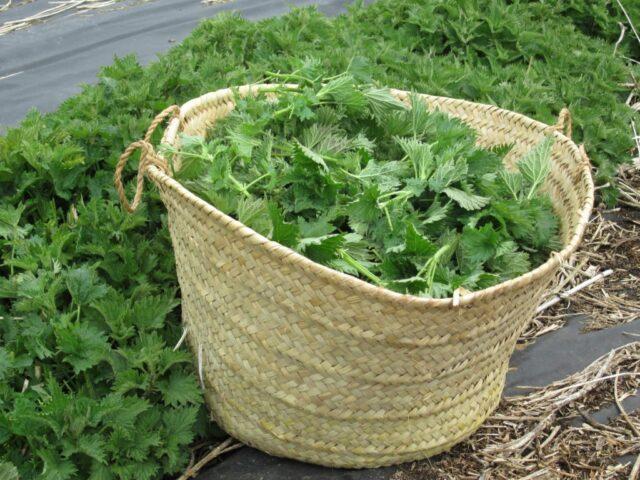
Raw materials can be bought at a pharmacy or prepared yourself
Features of the use of nettle in the treatment of joints
Nettle should be used with caution for treatment. First you need to find out an accurate diagnosis and get a doctor’s recommendations. You cannot replace the regimen prescribed by the doctor with traditional methods.If they can be combined with the main treatment, strictly adhere to the dosage of dosage forms when taken orally. It is worth remembering that bathing is contraindicated for patients with hypertension, as it can cause a crisis. Ointment, oil, compresses need to be tested for an allergic reaction.
Contraindications
Along with the positive effects of nettle, its use can cause undesirable reactions, therefore there are restrictions and contraindications to the use of plant-based medicines. Among them:
- atherosclerosis;
- thrombophlebitis;
- phlebeurysm;
- internal bleeding;
- heart failure;
- increased blood clotting;
- pregnancy in the first trimester;
- childhood;
- renal failure;
- individual intolerance.
Conclusion
Treatment of joints with nettle is a simple, affordable and effective method. Using it as an additional method to the main one, you can significantly reduce pain and improve the quality of life at any age.




